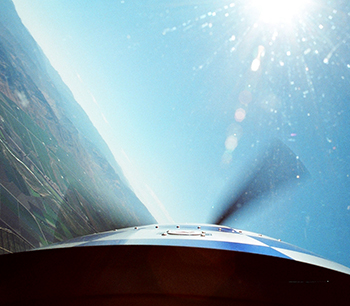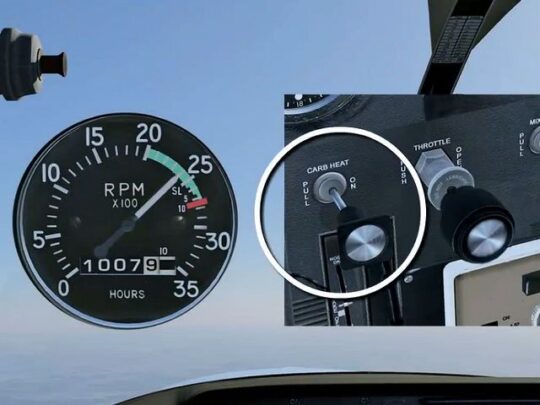Subscriber question:
"I have my first Flight Review coming up and I’m terrified the CFI will ask me to do steep turns. I never really understood them and barely passed my checkride because of them. How do I master these things?" — Wiley T.
Bruce:
 “The key to performing a steep turn—and other training maneuvers—is to remember the purpose of the exercise, and not just learn a rote procedure that meets the ACS standard.
“The key to performing a steep turn—and other training maneuvers—is to remember the purpose of the exercise, and not just learn a rote procedure that meets the ACS standard.
There’s a lot going on in a steep turn: division of attention, orientation, comfort with higher G-forces, overbanking tendency, and learning the control inputs required to maintain altitude at a constant airspeed during the turn. All of these lessons can be introduced by flying a steep turn incrementally, with gradually increasing bank angles.
First, establish straight-and-level flight at the correct maneuvering speed. About 2000 RPM will yield 90 knots for a Cessna 172 or similar fixed-pitch single. Clear the area in the direction you’ll turn and roll into a 20-degree bank. Hold that shallow bank until you can clearly see the slight pitch-up required to maintain altitude—without adding trim. Adding maybe 50 RPM is all that’s needed to maintain airspeed. Hold this shallow bank through 90, 180, or even 360 degrees to get the picture (while looking for traffic, monitoring the airplane, and maintaining your orientation).
Next, without returning to wings-level, increase the bank angle to 30 degrees. Note the slight additional pitch up required—without adding trim—to maintain altitude as the vertical component of lift changes with the steeper bank angle. Add power as necessary to hold airspeed—perhaps another 50 RPM. Stay at that bank angle until you can hold the new pitch attitude and maintain altitude, even if one or more 360s is required.
When you’re ready for a ‘real’ steep turn—again, without rolling wings level and without adding nose-up trim—smoothly increase the bank angle to 45 degrees. Add back pressure to hold the attitude required to maintain altitude. Increase power as necessary.
Practice slightly decreasing and increasing the bank angle—plus or minus 5 degrees—to help you hold altitude. Note the pitch attitude and power setting required. You’ll find that you’re flying a steep turn within standards without all the fuss usually associated with the maneuver.
To roll out, reverse the process and pause at 30 degrees, and then 20 degrees, before returning to wings-level, all the while decreasing pitch and power to maintain altitude and airspeed. At first, don’t obsess about your target heading. Focus on the sight picture, power settings, and feel of the control pressures.
After flying a few of these incremental steep turns (if necessary, with intervals of straight-and-level to let your inner ear and stomach settle) go directly from wings-level to 30 degrees and back. Then try wings-level to 45 degrees and back. Because you know the pitch, power, and control feel targets, you’ll roll in and out of steep turns on heading, without diving, ballooning, slowing, or accelerating. You’ll master the maneuver more quickly because you feel less rushed. The gradually increasing control forces are easy to manage without resorting to trim.
And you’ll understand the purpose of practicing steep turns—rather than obsessing on the standard by which they’re judged.”
Did a specific tip or hack help you master steep turns?

